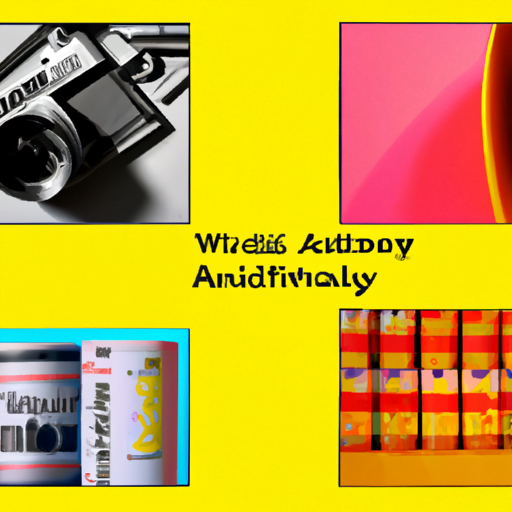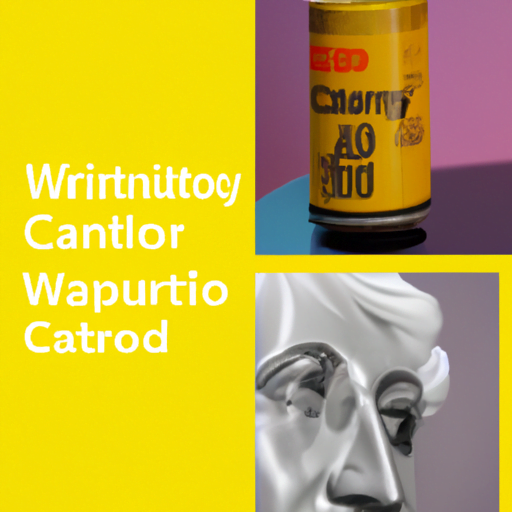
-
Table of Contents
- Crafting Visual Narratives: Telling Stories Through Design
- What are Visual Narratives?
- The Power of Visual Narratives
- Elements of Visual Narratives
- 1. Composition
- 2. Color
- 3. Typography
- 4. Imagery
- Case Studies: Successful Visual Narratives
- 1. Nike’s “Dream Crazy” Campaign
- 2. The New York Times’ “The Displaced” VR Experience
- Conclusion
Crafting Visual Narratives: Telling Stories Through Design

Design is a powerful tool that goes beyond aesthetics. It has the ability to communicate ideas, evoke emotions, and tell stories. Visual narratives, in particular, have become increasingly popular in various fields, from advertising and marketing to user experience design. In this article, we will explore the concept of crafting visual narratives and how it can be used to effectively tell stories through design.
What are Visual Narratives?
Visual narratives are a form of storytelling that relies on visual elements to convey a message or tell a story. They combine images, typography, colors, and other design elements to create a cohesive and engaging narrative. Unlike traditional narratives that rely on words alone, visual narratives have the advantage of being able to communicate across language barriers and engage viewers on a deeper level.
Visual narratives can take many forms, including illustrations, infographics, animations, and even interactive experiences. They can be found in various mediums, such as print media, websites, social media, and video content. Regardless of the medium, the goal of a visual narrative is to captivate the audience and leave a lasting impression.
The Power of Visual Narratives
Visual narratives have the power to engage viewers and leave a lasting impact. Here are some reasons why visual narratives are so effective:
- Emotional Connection: Visual narratives have the ability to evoke emotions and create a personal connection with the audience. By using visual cues, such as facial expressions or color palettes, designers can elicit specific emotional responses from viewers.
- Memorability: Visual narratives are more memorable than plain text. Studies have shown that people remember information better when it is presented in a visual format. By incorporating storytelling elements into design, designers can create memorable experiences that stick with the audience.
- Universal Language: Visual narratives can transcend language barriers. Unlike written narratives, visual narratives can be understood by people from different cultures and backgrounds. This makes them a powerful tool for global communication.
- Engagement: Visual narratives are inherently engaging. They capture attention and encourage viewers to explore the story further. By using interactive elements or animations, designers can create immersive experiences that keep the audience engaged.
Elements of Visual Narratives
Creating a compelling visual narrative requires careful consideration of various design elements. Here are some key elements to consider:
1. Composition
The composition refers to how the visual elements are arranged within a design. A well-composed visual narrative guides the viewer’s eye and creates a sense of balance. It involves the use of techniques such as the rule of thirds, leading lines, and framing to create a visually pleasing and harmonious composition.
2. Color
Color plays a crucial role in visual narratives. Different colors evoke different emotions and can help convey the mood or tone of a story. For example, warm colors like red and orange can create a sense of excitement or passion, while cool colors like blue and green can evoke calmness or tranquility. Designers should carefully choose colors that align with the narrative they want to tell.
3. Typography
Typography is not just about choosing the right font; it is also about how the text is arranged and presented. The choice of typography can greatly impact the readability and overall aesthetic of a visual narrative. Designers should consider factors such as font size, spacing, and hierarchy to ensure that the text complements the visual elements and enhances the storytelling.
4. Imagery
Imagery is at the heart of visual narratives. The choice of images, illustrations, or graphics can greatly influence the story being told. Designers should select visuals that are relevant, compelling, and align with the narrative. They can use techniques such as symbolism or metaphor to add depth and meaning to the visuals.
Case Studies: Successful Visual Narratives
Let’s take a look at some real-world examples of successful visual narratives:
1. Nike’s “Dream Crazy” Campaign
Nike’s “Dream Crazy” campaign featuring Colin Kaepernick is a powerful example of a visual narrative. The campaign used a combination of powerful imagery, typography, and storytelling to convey a message of empowerment and social justice. The visuals, such as close-up shots of athletes and bold typography, created a sense of determination and resilience.
2. The New York Times’ “The Displaced” VR Experience
The New York Times’ “The Displaced” is an immersive virtual reality experience that tells the stories of three refugee children. By using VR technology, the visual narrative allowed viewers to step into the shoes of the children and experience their lives firsthand. The combination of visuals, audio, and interactivity created a deeply emotional and impactful storytelling experience.
Conclusion
Crafting visual narratives is a powerful way to tell stories through design. By leveraging the elements of composition, color, typography, and imagery, designers can create engaging and memorable experiences that resonate with the audience. Visual narratives have the ability to evoke emotions, transcend language barriers, and leave a lasting impact. Whether it’s in advertising, marketing, or user experience design, visual narratives have become an essential tool for effective communication. So, the next time you embark on a design project, consider the power of visual narratives and how they can elevate your storytelling.
